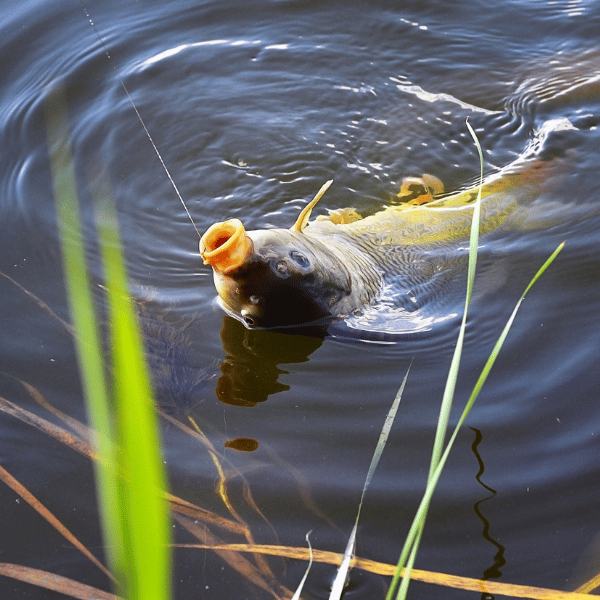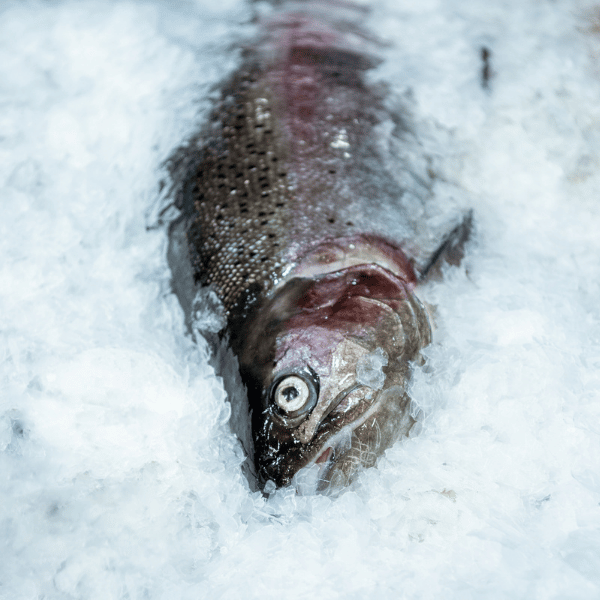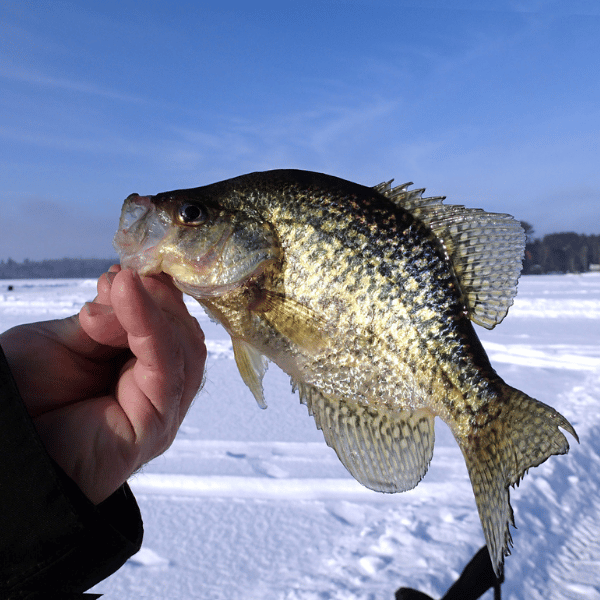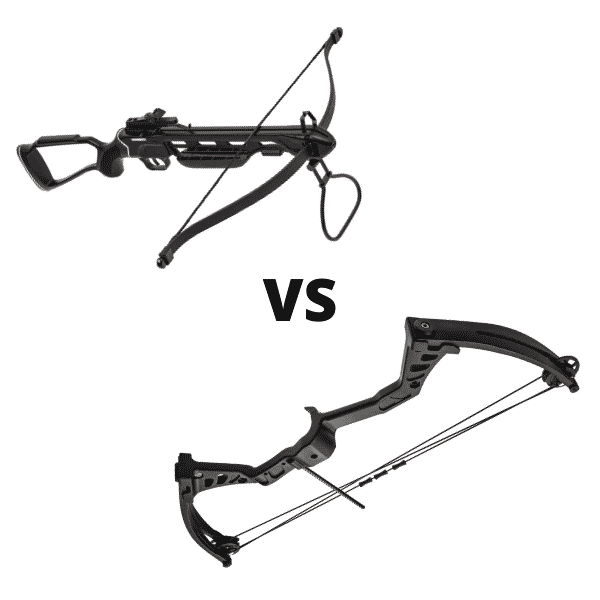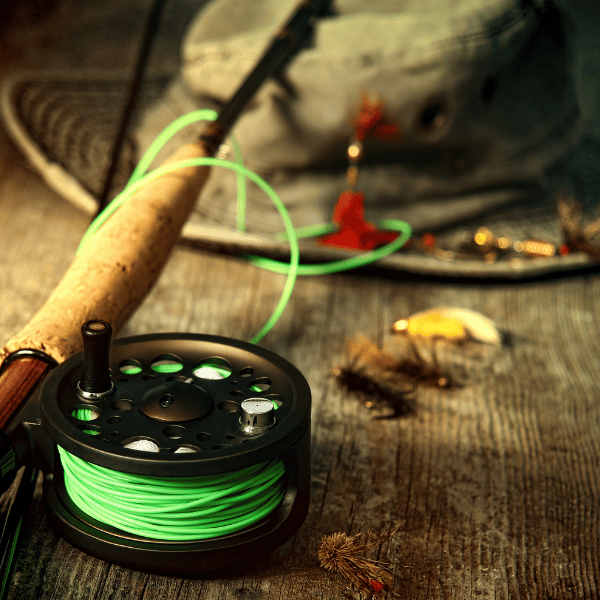Ice Fishing Crappie With Minnows
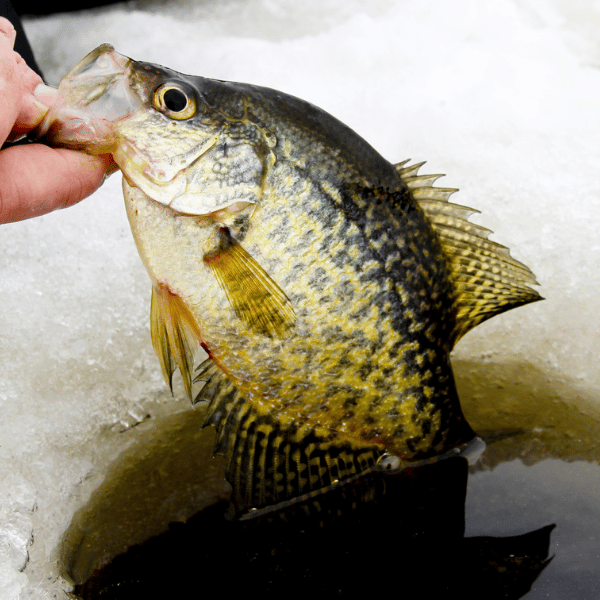
Getting started ice fishing crappie with minnows will require a little bit of knowledge on the gear and set-up required for crappie fishing.
Minnows are a popular bait choice for ice fishing crappie. Before going out for your first fish you will want to make sure you have the right size minnows and the right rigging for the job.
You’ll also want to have a backup bait, incase the crappies are being stubborn. When selecting alternative baits, there are several options you can choose from.
In this guide, we will get you successfully ice fishing for crappie with minnows.
Contents
Size of Minnows for Ice Fishing Crappie

When using minnows for ice fishing crappies, size matters. Medium-sized shiners or big blackheads are a great choice.
Crappie will go for small, medium, or large minnows and this gives you a lot of flexibility. At the end of the day, we recommend sticking with the medium size minnows.
On the other hand, having a combination of different sizes may give you an advantage. If you choose to go this route when ice-fishing, try to switch things up every 10 or so minutes if you haven’t gotten a bite.
Also, regardless of size, make sure your minnows are active—this will increase your chances to get a bite.
Good Minnow Rig for Ice Fishing (Lures & Hooks)
If you are choosing to use a different style of lure, there are many options that work great for hooking crappie.
Small Jigs
You can find success with small jigs—these are a perfect size match to the sort of things crappie like to eat. These can be jigged vertically, horizontally, or held stationary at a specific depth, which is ideal for ice fishing.
When looking into small jigs, try 1/32 – 1/64 oz if you’re in shallow water and a 1/16 oz for deeper water.
Small Spoons
These lures imitate the movement and appearance of wounded minnow or shad. They are very effective at catching a crappie’s attention and luring them into biting.
There are several great choices in this category from the 1/16 to ⅛ oz sizes, but you may want to go heavier for when the crappie are swimming deeper.
Soft Plastics
These are made in a variety of ways and have alluring movements that make them extremely attractive to crappie. These are great to have in your repertoire for when the live bait doesn’t make the cut.
Hooks
A Crappie has a fairly large mouth when compared to its body size. When choosing a hook, you’ll need to take this into consideration.
#2 and #4 hooks will generally do the trick, but depending on the size of your bait you may find yourself using a #1.
When it comes to style, it becomes a matter of preference for the most part. A circle hook, sickle hook, or Aberdeen hook will do the trick.
The Aberdeen hook is easily the most common hook design used for crappie, so if you have little experience fishing for them an Aberdeen is a great place to start.
There is some interesting anecdotal evidence that the color of the hook you select may influence how the crappie behaves. This evidence suggests that gold, red, and bronze hook may have more success.
How Do You Hook a Crappie Minnow for Ice Fishing?
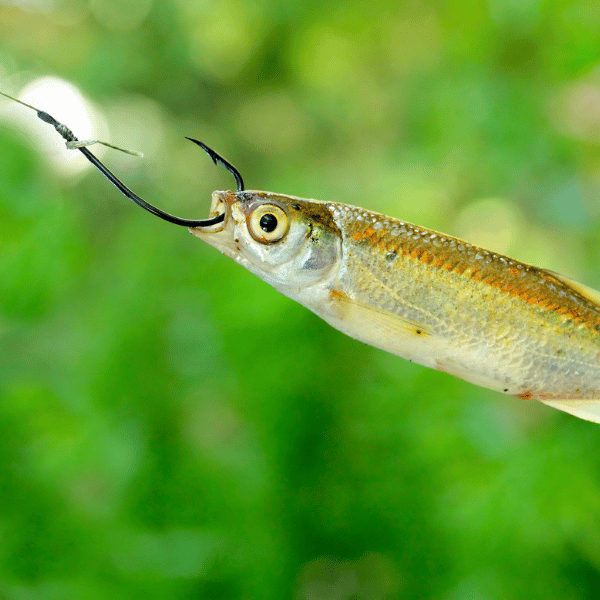
There are several different ways to hook live minnows when ice fishing. Here we will review the most common methods and why you may want to use them.
Dorsal-Hook
This may be the easiest way to consistently catch crappie on live minnows beneath ice. This involves hooking a minnow through the back.
You want to hook minnow in this way because this allows them to continue to swim naturally, which makes them far less intimidating to the crappie.
The most important thing is not restricting the movement of the minnow. To do this, hook the minnow directly behind the dorsal fin through the upper skin. Make sure you do not hook too deep, else you may hit the spine and interfere with the minnows movement.
Tail-Hook
This method does have some unique benefits. To tail-hook a minnow, you will want to insert the hook just in front of the tail, careful not to hit the spine.
This method finds success when the crappies are staying particularly deep, or when you accidentally gut-hook when trying to dorsal-hook the minnow. It is also useful for smaller minnows who may be hard to hook elsewhere.
If using this method for crappies that are staying deep, you will want to use a heavier weight that will help keep the bait closer to the bottom.
Keep in mind, crappie will eat a minnow head first. Once you get a bite, you’ll want to wait a few seconds to make sure you get the hook, as it is far from the head.
Lip-Hook
This is another very common way to hook live minnow that has some unique benefits. Most notably, hooking a minnow in this way will help to get the bait more active, and therefore more appealing.
For the bait to look appealing, you’ll want it to be lively and move a lot. Lip-hooking is a great way to get a slow, inactive minnow moving.
To do this, insert the hook through the bottom and the top lip with the hook point on top. For smaller, more fragile minnow, you may want to hook just the upper lip to keep them more active for longer, as this does hurt the minnow.
Minnows vs. Plastics for Crappie
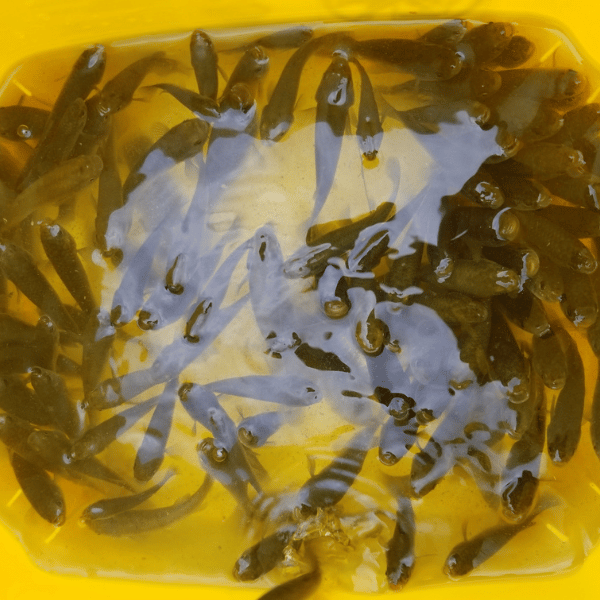
There are many things to consider when choosing between minnows and plastics for ice fishing crappie.
In general, live bait will be more active. This is more attractive to crappies and you may find that you are able to hook more frequently with live bait.
Having plastics as a backup is important too. If it is one of those days that the crappie do not seem interested in live bait, having an alternative can give you a chance at still pulling some in.
If you rely entirely on plastics, you will want to get some high-quality ones. It is not impossible to ice fish crappies with only plastic, and many people report that they have had plenty of success without the use of live bait.
Having a diversity of bait options and trying to see what works with different locations and depths is the key to ensuring success.
If, however, you choose to use only one type of bait, pick the minnows. These will be as naturally appealing as possible to any fish that lurk beneath the ice.
Also, when getting your minnows ready for action, make sure you hook them in a way that allows them to swim as freely and naturally as possible. Using the dorsal-hook method is best for this, second to the tail-hook method for smaller minnows.
Crappie Minnow Ice Fishing Depth
Crappie will spend the majority of their time two to three feet from the bottom of the body of water you are fishing.
Depth and temperature can affect this, but in general, you will want to make sure you can cast to this range with your equipment comfortably.
If you are having trouble getting your bait to this range with your rig, try adding some extra weight to your line.
This weight along with your bait will drag everything lower and ensure that your minnow or plastic is swimming in the ideal range of the crappies.
Crappie Fishing with Minnows FAQ
As long as you are able to reach 2-3 feet from the bottom, you can fish as deep as you would like in an area that has crappies.
This depends on the location and population of crappie fish in the lake. As with most fishing, you will find the most productive fishing gets done early in the morning—before sunrise. When the sun is going down is also a great time to go ice fishing.
There are many resources for this such as websites, apps, and local knowledge. When looking at your area, if you find a body of water that is frozen over and covered in snow, you can look for holes to see if there has been any previous activity. Holes in the ice large enough to fish from are a good indicator that this spot can be fished.
